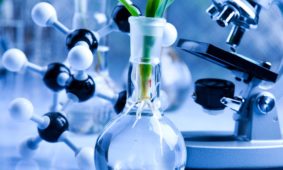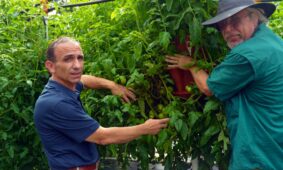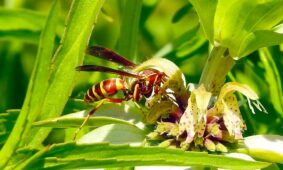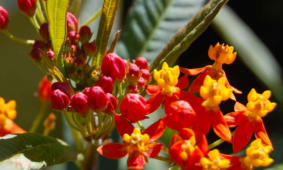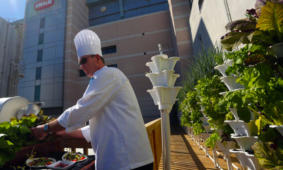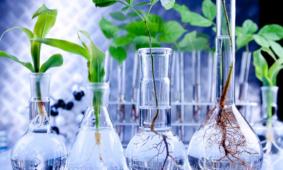The Foundation of Hydroponics
Category 1: Class of Hydroponics Agroponics Aeroponics Aquaponics Category 2: Nutrient Derivations Hydroponic Bioponic Aquaculture Category 3: Types of Hydroponic Systems: Open/Closed High Density Vertical (HDV) Vertical Nutrient Film Technique (NFT) Deep Water Culture (DWC) Ebb and Flow Drip There is some controversy over the way to classify hydroponic systems. The purpose of this article […]
READ ARTICLEAn overview of Hydroponics
Definition of Hydroponics Hydroponics is actually the science of growing plants without soil. Rather than soil, plants are grown in solutions containing each of the necessary minerals and elements. Methods utilized to get the nutrients to the roots, combined with the needed oxygen, include bare-root systems and systems using inert substrates to support the growth […]
READ ARTICLEWhy Use Hydroponics
The ability to produce higher yields than traditional, soil-based agriculture Allowing food to be grown and consumed in areas of the world that cannot support crops in the soil Eliminating the need for massive pesticide use (considering most pests live in the soil), effectively making our air, water, soil, and food cleaner Pesticide free products […]
READ ARTICLEMidsummer Night Meadows, Backyard Garden
Summer in Central Texas is once again in full swing, and it is flaunting its lush growth potential beautifully on Larry and Brenda Johnson’s rural property in their EzGro Backyard Garden, Midsummer Night Meadows. Larry Johnson, the founder and developer of the EzGro High Density Vertical Gardening System, constructed this 30- tower system in 2010, […]
READ ARTICLETexas farm goes vertical to net tall yields
RED ROCK — In an area of Texas known by locals as “East of Weird” because of its proximity to progressive Austin, a farm is yielding many bushels of fruit and vegetables on a space no larger than a parking space. Being a “computer guy from San Antonio,” now-farmer Larry Johnson says he didn’t know […]
READ ARTICLEPaper Wasps
Paper wasps are social insects that build intricate nests from paper fibers and raise their young communally. They may strike fear into the hearts of those who see them, but they are highly beneficial pollinators who skillfully remove young caterpillars from flowers and vegetables to feed their growing young. Common Names: Paper wasps Genus/ Species: […]
READ ARTICLEHydroponic Nutrients
Fertilizer vs. Hydroponic Nutrients In order to begin a discussion on hydroponic nutrients, it’s important to first distinguish the difference between the terms fertilizer and hydroponic nutrient. Fertilizer is intended to feed the microorganisms in the soil, such as beneficial bacteria and fungi. All of the living components in the soil must be protected, so […]
READ ARTICLEEC vs TDS
A quick answer to why we should use EC instead of TDS The debate over EC and TDS has been an ongoing issue for a long time. These two measurements are used to determine the strength of hydroponic solution. Although they are widely used they should only be used as a guideline and you should […]
READ ARTICLEAttracting Beneficial Insects
There are millions of species of insects, all trying to survive in the world. When insects cause harm to humans or the things we care about (plants, animals, buildings, etc.), they are considered pests. Only 1% to 3% of all insect species in the world have ever been considered pests. There are a number of […]
READ ARTICLEBest Light for Plant Growth
We all know that light is crucial for plant growth, but many growers don’t know what to look for when choosing light bulbs, or why their plants need a specific type of light. In this article, we’ll cover why plants need light, and the best type of bulbs for plant growth. Photosynthesis is the process […]
READ ARTICLEAn EzGro Garden At Amalie Arena
Towers Provide Fresh Produce at Hockey Arena What types of food do you eat while watching an ice hockey game at a stadium? For most people, the answer would be pizza, chicken wings and beer. A hockey stadium in Tampa, Florida has changed this norm to include fresh produce on the menu for both hockey […]
READ ARTICLEOrganic Does Not Mean “No Pesticides”
Many people believe that organic produce does not contain pesticides, which is a common misconception. In order to become certified organic, 95% of the chemicals a farm uses must be certified organic. This means that 5% of the pesticides, fertilizer, or herbicides may be synthetic! Organic farmers can use as much organic pesticide (pesticide that […]
READ ARTICLEHow Plants Uptake Nutrients
Nutrients play an important role in many plant processes. Nitrogen, for example, is a component of both amino acids (the building blocks of protein) and chlorophyll (the green pigment present in all plants). Phosphorous is essential to the formation of a plant’s DNA and RNA, and potassium is crucial to growth regulation and photosynthesis. Aside […]
READ ARTICLEWhat is Aquaponics
Welcome back! Let’s keep discussing the different categories of hydroponics. If you haven’t read our Foundation of Hydroponics article, check it out first, then meet back here. Just to recap, the first category that is used to classify hydroponic systems is called the Class of Hydroponics, and it describes how plant roots are supported in […]
READ ARTICLEWhat is Aquaculture
There are a few different ways to classify hydroponic systems, and one way is to determine where in the world the nutrients come from. The category, “Nutrient Derivations” includes three sources of nutrients that may be used in a hydroponic system: Hydroponic, Bioponic & Aquaculture. Remember that the term Hydroponic is used to describe all […]
READ ARTICLEpH Measurement
pH measurement is used in a wide variety of applications: agriculture, wastewater treatment, industrial processes, environmental monitoring, and in research and development. pH is a measure of the acidity or alkalinity of a solution. The pH value states the relative quantity of hydrogen ions (H+) contained in a solution. The greater the concentration of H+ […]
READ ARTICLE





